With all the focus on the latest release of FileMaker, you may have missed some interesting updates to Claris Studio and Claris Connect. We’ll discuss the new features and how they may benefit developers.
Claris Studio adds FileMaker data source
Claris added a major new feature to Studio: the ability to connect to an existing FileMaker table. However, there are certain requirements and some caveats to using this feature.
In previous releases of Studio, you could add an external data source from Studio to your FileMaker database, but it would appear as a shadow table. In other words, the table exists only in Studio, and while you could edit records and even add fields, changes would not be reflected in Claris Studio.
The latest release of Studio allows you to use an existing FileMaker table with the following requirements:
- FileMaker 2025 (v22) Server and Client,
- A valid SSL certificate,
- OData API enabled on FileMaker Server and in Client Security Settings,
- Existing table in FileMaker,* and
- External authentication.**
*Note: It is not possible to use a table view from Studio and replicate it as a new table in FileMaker. However, Claris noted during a recent Community Live session that this may be an option in the future.
**Internal FileMaker accounts are no longer supported except for administrative setup. This change is due to the switch to the OData API.
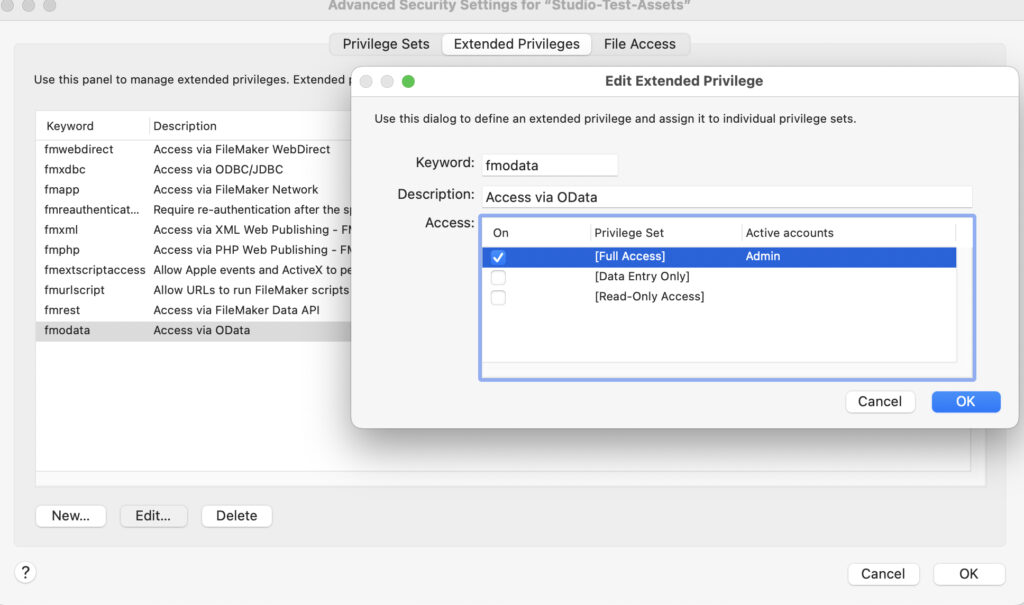
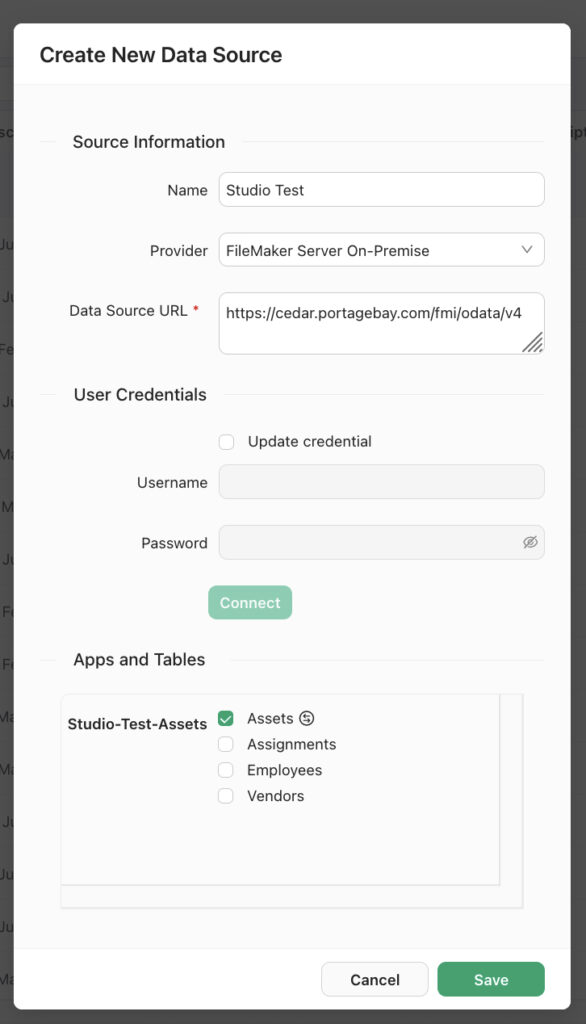
When adding a new FileMaker datasource, you can change the field type on the target fields. For example, an email is stored as a text field in FileMaker; however, in Studio you can assign the “email” field type, and entries will be auto validated to ensure proper email formatting.
Currently, you cannot select the fields you want to include in Studio. All fields will be synced by default. This could be problematic if your table contains a lot of fields. Claris plans to add the ability to turn syncing off for certain fields in a future release.
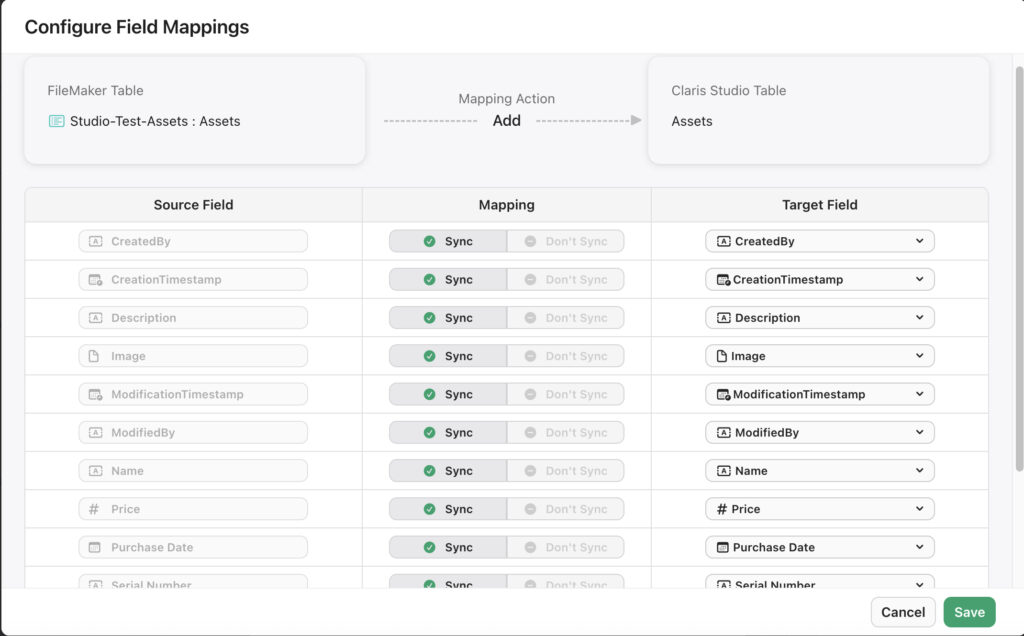
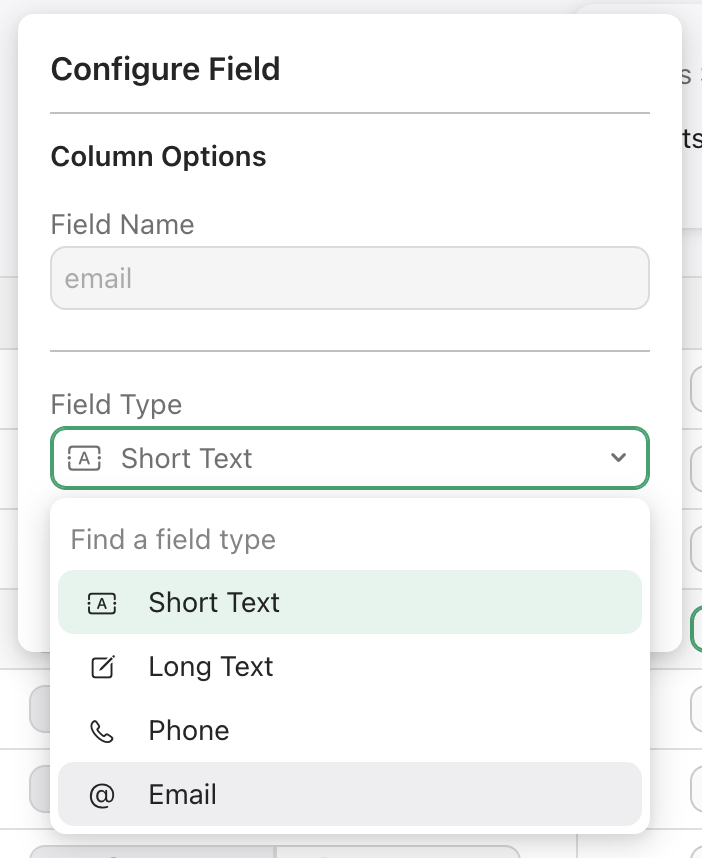
Another handy feature Studio offers is that it will continue to receive new records and present data even if the FileMaker data source is unavailable. This is because Studio uses its own internal table, which is automatically created during the data source setup process, to store data before syncing to FileMaker. Once the FileMaker Server is accessible again, Studio will sync any new records that were created..
Currently, data added to a container field via Studio will not sync to the FileMaker table; however, container data already in FileMaker will transfer to Studio.
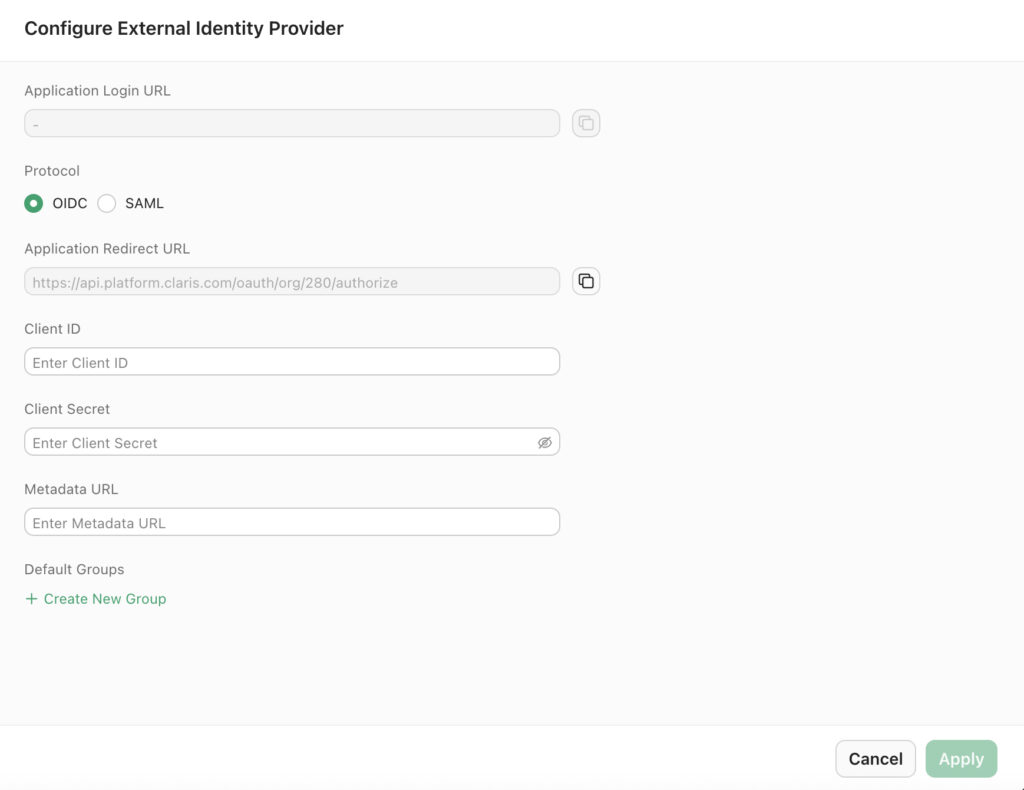
Currently, connecting to FileMaker only works in one direction, where the table must first exist in FileMaker. Future plans include bidirectional support where tables created in Studio will be replicated in FileMaker. Transferring Value Lists will also be supported in a future release.
Now that you have your connection to FileMaker set up, you can make schema changes from either Studio or FileMaker and have them reflected in the other. For example, you could add a “rating” object to your Studio view and it will translate to a number field in your FileMaker table.
Caveats
First, it’s important to keep in mind what Claris Studio is designed to do: collect and present data easily on the web. Studio now supports up to 250K records, a significant increase from the previous limit of 1,000. However, the new record limit only applies to newly created custom views. Existing ones will still have the 1,000 record limit.
Another caveat to watch out for is that all of the records in your FileMaker table will be pulled into Studio. So, if there are 10,000 records in your table, all of them will be transferred to Studio. While there is currently no way to limit the number of records that are pulled into Studio, it is possible to filter data based on the user. For example, Studio now allows you to map an email address so that only records related to that email will be accessible to that user based on their login credentials. This is a handy feature with many real-world uses.
Claris noted that future plans will allow developers to limit or prevent data transfer during the setup process.

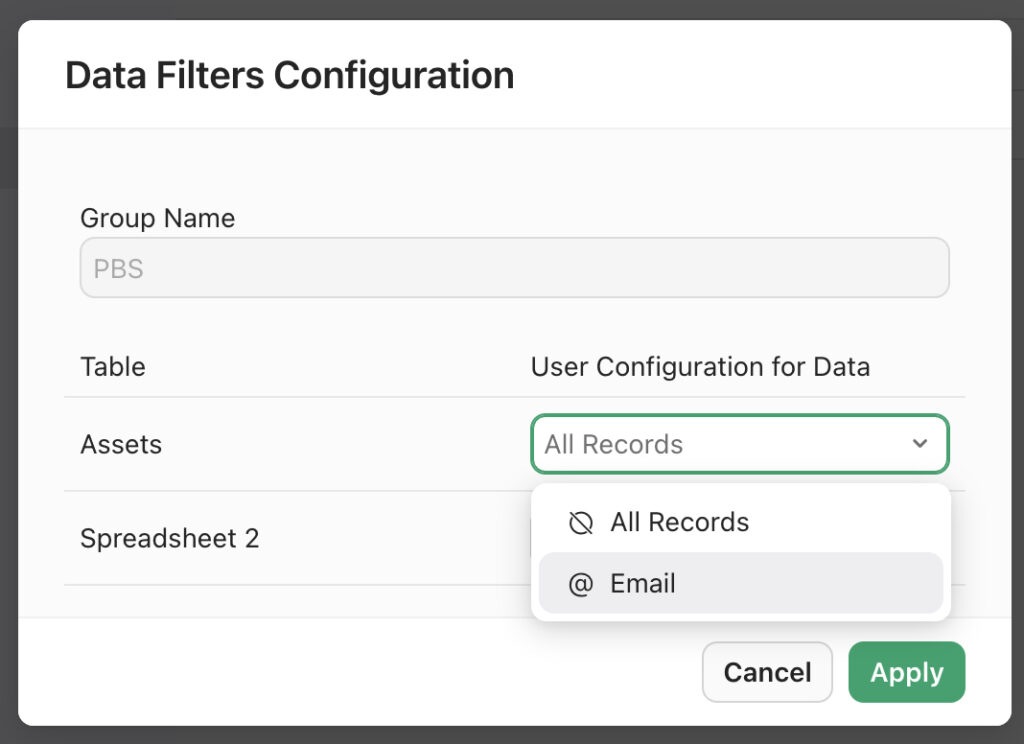
With the switch to OData, Studio can no longer use internal FileMaker accounts. Only external authentication is supported if you want to limit access to data. This is a very useful change, as external authentication allows for easier user management for a large number of users.
Lastly, Studio does not support edit collisions management. For example, if an online user edits a record at the same time as a FileMaker user, the edits made in FileMaker will trump those made in Studio. While it makes sense to prioritize FileMaker over Studio, it might be wise to consider setting up an internal method for editing records that would not conflict with any potential edits made via Studio depending on your use case.
Other enhancements
Studio has a handful of other updates.
- New ADDRECORD function can be used with the Perform Formula button action for more programmatic control over how records are added, compared to the Add Record button action that opens the Add Record dialog for manual data entry.
- Several new guides and tutorials have been added.
- Reference content has been added for Claris Studio calculation functions.
- Session timeouts have been significantly increased.
- Add Related Data Record button action settings are now saved to the button itself instead of to the target object to prevent interference between the two.
- In custom views, unchecking the “Use Field Name for Display Name” for a field now uses the correct text for the display label.
Testing the new Claris Studio features
In terms of performance, we found the process of adding a FileMaker data source was very quick, taking only a few seconds. Once synced, we experienced no delays scrolling through 10,000 records. Claris noted that syncing will be slower if your app contains a lot of container data. They are working to improve syncing performance in this area.
We decided to review another new Studio feature: List-Detail view. Much like a self-join portal display, List-Detail view provides a scrolling list of records on the left and the details of a selected record on the right.
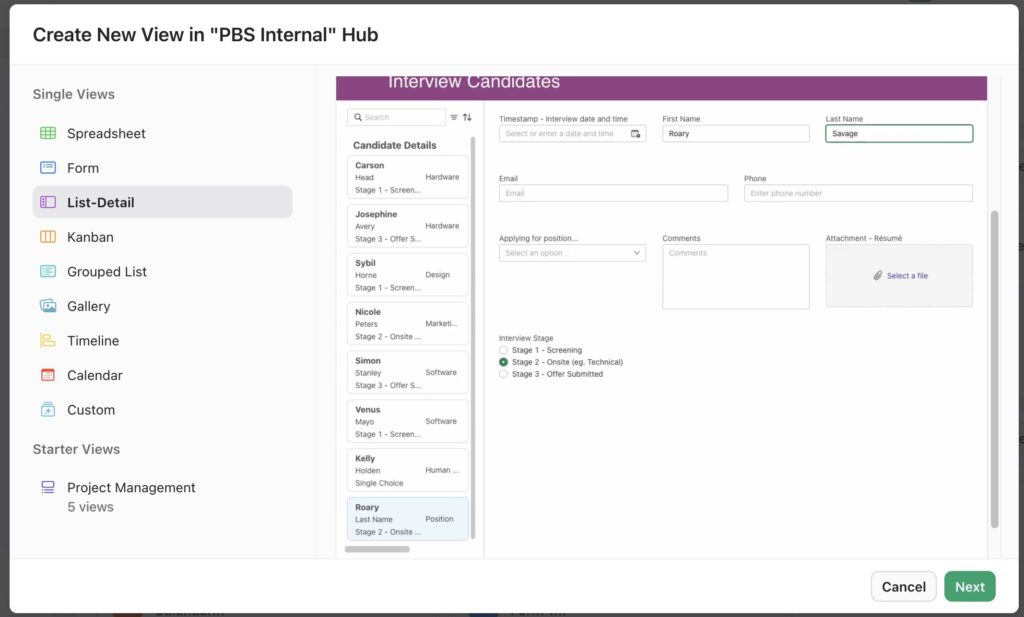
During the setup process, you can edit which fields display in the list and detail areas, as well as set any conditions for showing or hiding fields. You are limited to only three fields in the list view, each with a preset size and styling. The detail view allows you to remove any fields you do not want to show, supports positioning up to three objects per line, and offers options for read-only and required.

We are really impressed with this new view option. The ease with which fields are automatically added to the view, coupled with the customization options, is a powerful addition to Studio with great potential for many use cases.
During further testing, we had some difficulty getting Studio to see one of our databases. We opened a support ticket with Claris to troubleshoot the issue, and they suggested we try reducing the number of tables in the file. Our file had 83 tables. Removing 10 at a time, we were finally able to get Studio to see the file when we reached 10 remaining tables. We think this is probably a temporary limitation. There are many FileMaker solutions out there with more than 10 tables. Hopefully, this is a growing pains issue that will be solved down the road.
Claris Connect
Claris Connect has added a new step, Upload to Container, for passing data from Studio in a FileMaker container field. If you have a Claris Studio view that allows users to attach files, this new feature allows those uploads to be transferred into FileMaker. The Get File Link action step is needed to retrieve the URL from a Studio form attachment field. Otherwise you can manually insert a URL from other online sources.
Also new is Get Container Link action, which retrieves the URL to the contents of a FileMaker container. The container data can be stored internally or externally.
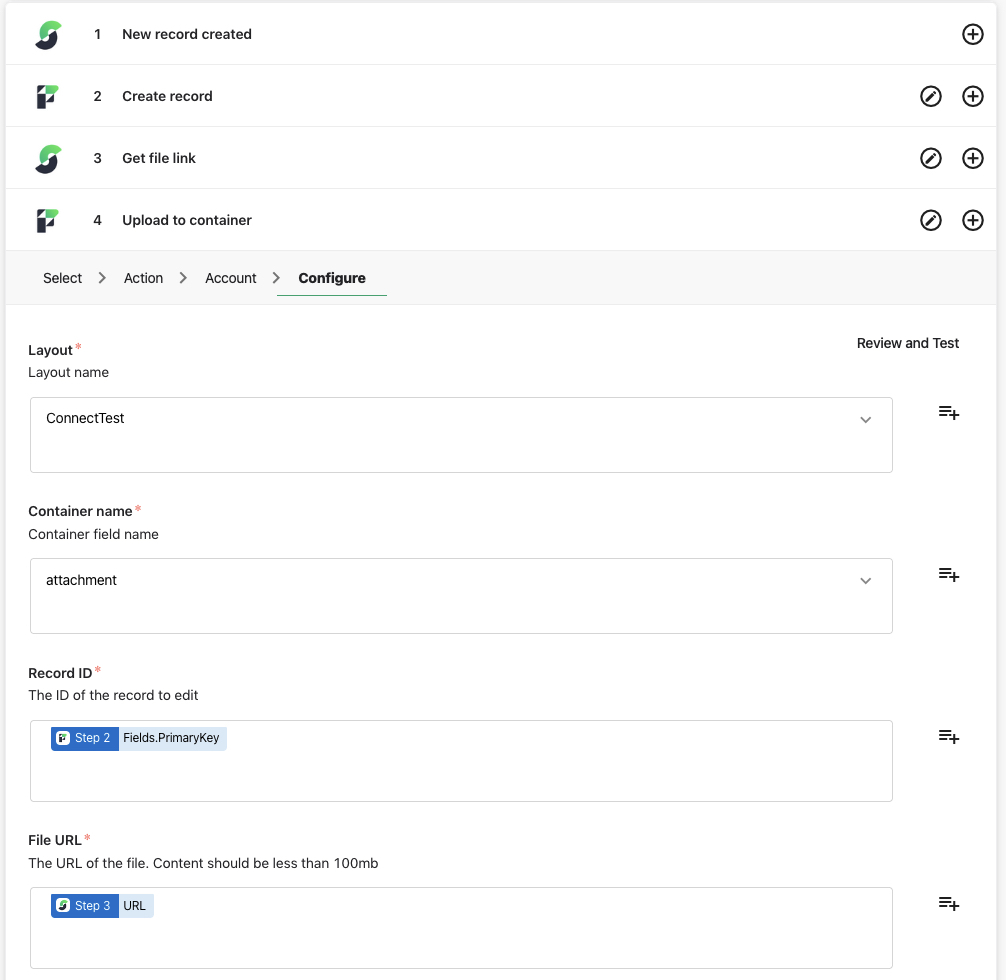
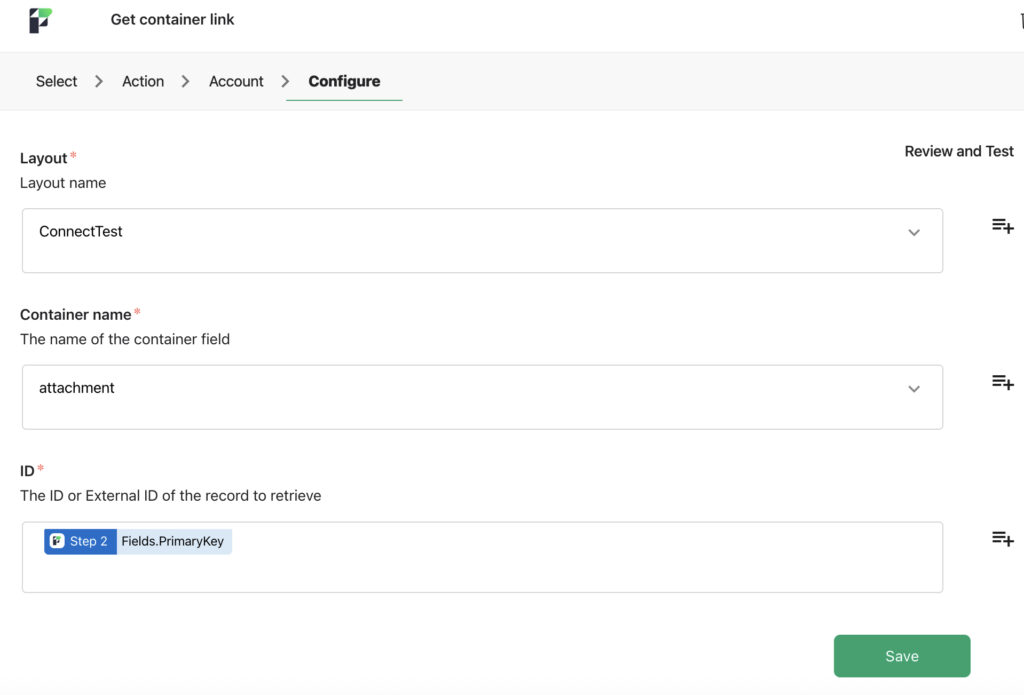

We tested both of these new features, and we were able to successfully transfer a file into the container field and retrieve the file’s URL. The ability to retrieve files from virtually anywhere as well as share container data via a link are very handy additions to Connect.
Additional updates include:
- Field IDs and Table IDs are now included in the table structure and returned in the response.
- Field definitions now include a Boolean index property.
Price changes
If you have a standard annual FileMaker Server license, FileMaker Cloud subscription, or an active perpetual license, or are a Claris Partner, Studio and Connect are included in your FileMaker Platform license. Pricing is divided into two tiers: Starter (formerly Essentials) and Max (formerly Standard). Pricing and features vary:
| Starter | Max | |
| Cloud* | $22 | $45 |
| On-Premise Server* | $17.50 | Contact Sales |
| Studio Shared Views | 10** | unlimited |
| Connect Flows (active) | 5 | 50 |
*The above pricing is per user, per month. FileMaker Server and FileMaker Cloud have a five-user minimum and are sold on an annual basis.
**Note: All publicly shared views plus any Studio view in a Hub with more than three users count towards shared views.
Until September 8, 2025, current customers on the Starter tier will have Max-level access to Claris Studio and Claris Connect. Those with Developer, SBA, or concurrency licenses will lose access. Claris will be adding these over time.
Final thoughts
We’re grateful for Claris’ continued efforts to improve these tools. There are still some pain points, but each new release brings tighter FileMaker integration, making it easier and faster to move data from FileMaker to the Web and back.
The latest Studio update provides a significant bonus that not only allows anonymous users to view data but also allows externally authenticated users to interact with FileMaker data. Support for containers in Claris Connect is also a welcome addition.
Internally, we have successfully been using Claris Studio for a new client onboarding questionnaire. Currently, our form view is coupled with a Claris Connect flow that generates a link to the entry and posts to our Slack channel. We plan to recreate our Studio form and connect it directly to our FileMaker client tracking database. Check back in a few weeks to read about our experience.
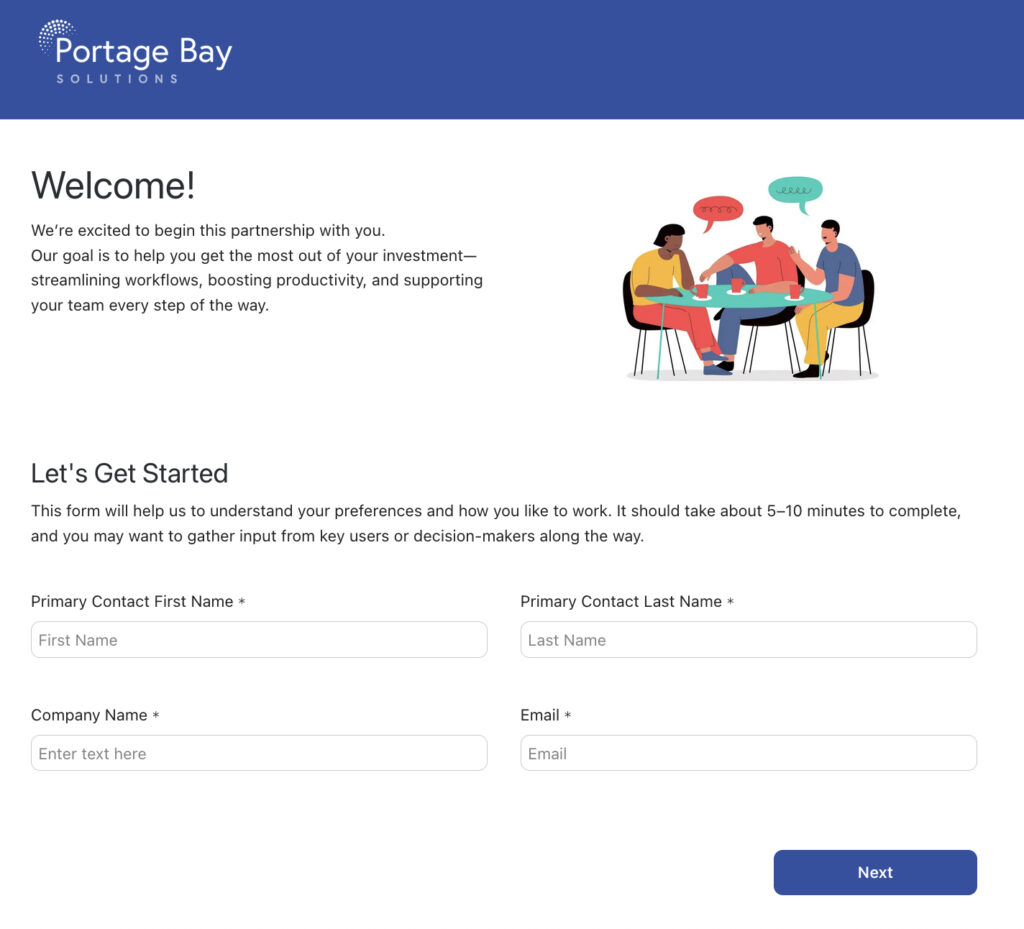
Now that Claris Studio and Connect are included with all FIleMaker Server licenses, these platform tools provide functionality developers can offer their clients for free, avoiding the added cost of similar third-party solutions. We look forward to future updates of Claris Studio and Claris Connect.If you have a FileMaker solution and want to easily provide access to your data from the Web, we’d be happy to help. Contact us for a free consultation.
